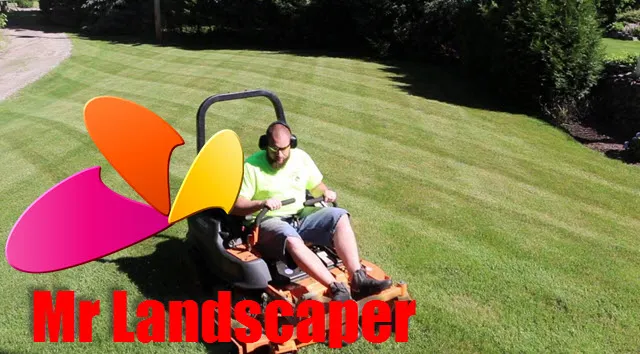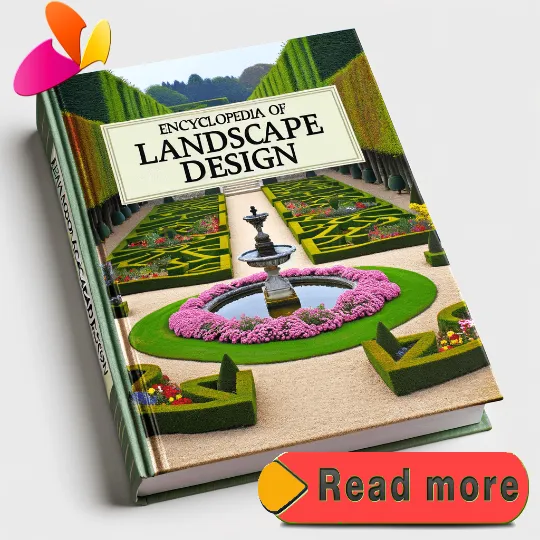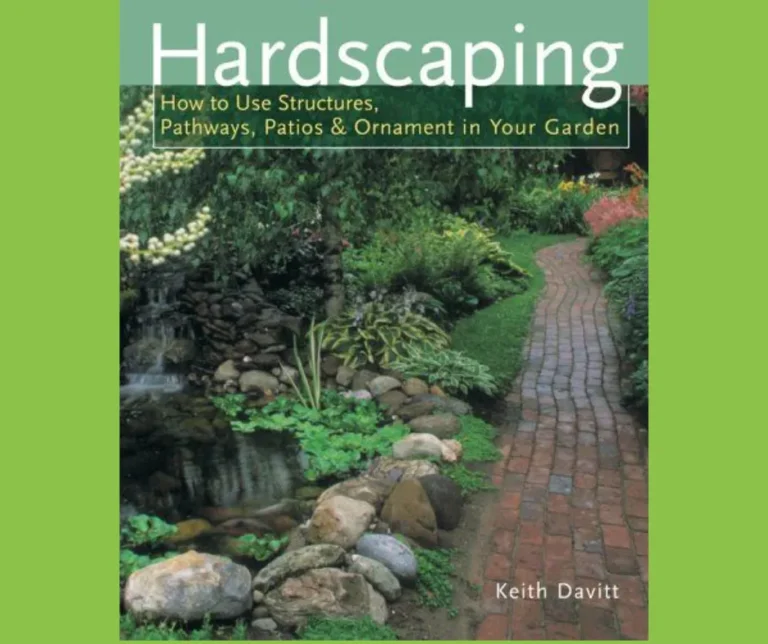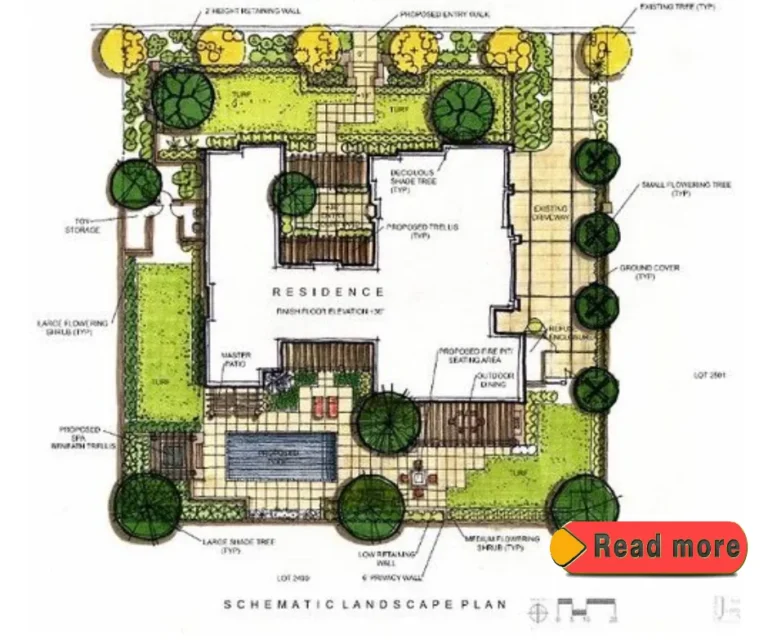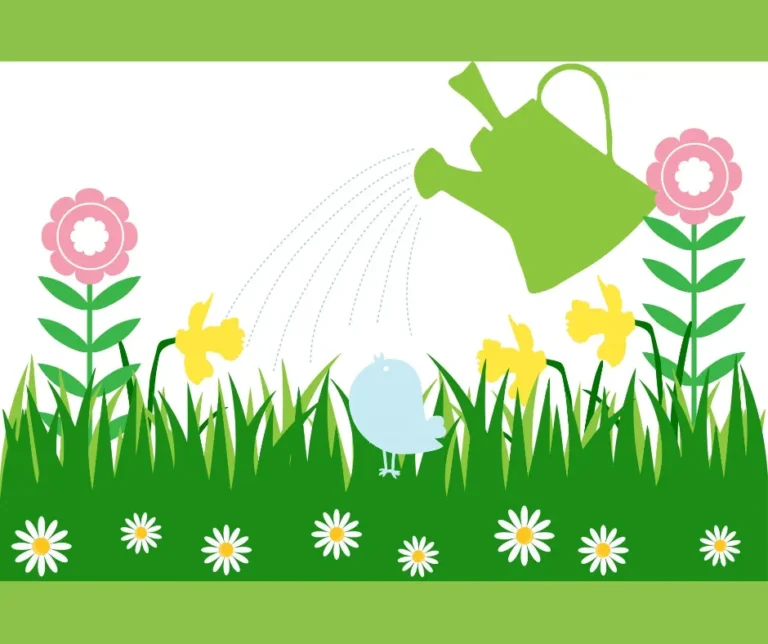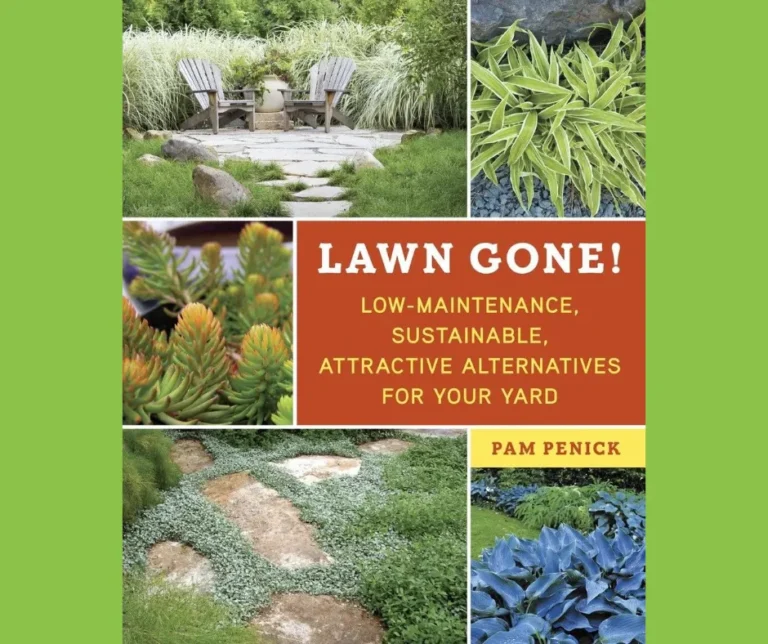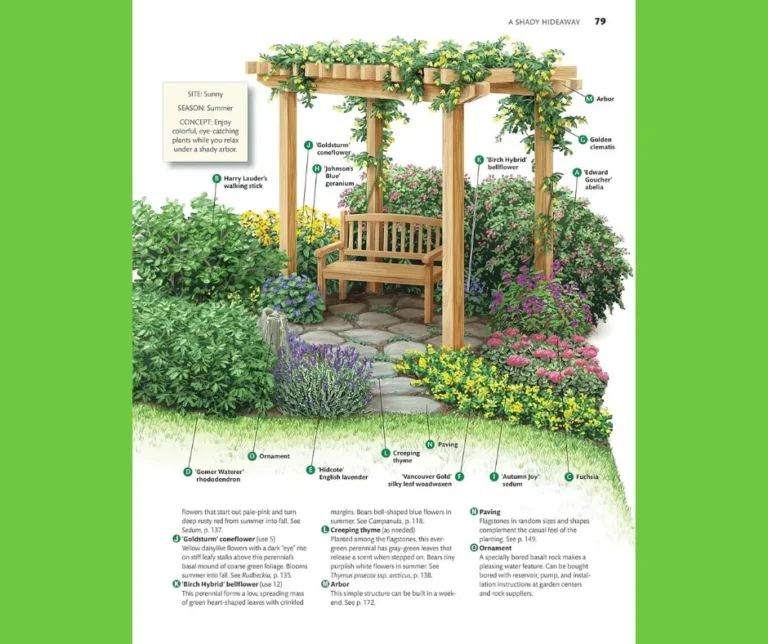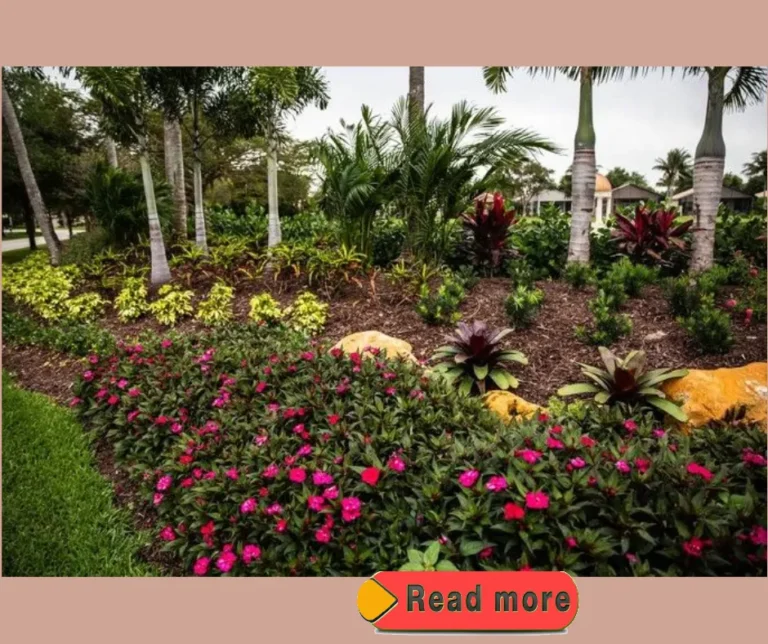Small Outdoor Landscaping Ideas
In the realm of outdoor design, the quest for creating aesthetically pleasing and functional landscapes can often present unique challenges, particularly in smaller spaces.
The “Encyclopedia of Landscape Design” serves as an invaluable resource for homeowners, landscape architects, and gardening enthusiasts seeking innovative solutions tailored to compact outdoor areas.
This comprehensive guide encapsulates a wealth of knowledge, offering a diverse array of ideas to transform limited yard space into captivating retreats.
From maximizing vertical gardening techniques to selecting the perfect plant varieties that thrive in confined environments, the encyclopedia provides practical applications and inspiration for every style and preference.
In a world where urban living increasingly limits outdoor space, the importance of strategic planning and creative design cannot be overstated.
By referencing the extensive insights contained within this essential publication, individuals can unlock the potential of their small gardens, balconies, and patios, cultivating environments that reflect their personal aesthetic while enhancing property value.
This article aims to delve into some of the most inspiring small outdoor landscaping ideas derived from the encyclopedia, equipping readers with the tools needed to achieve their dream landscapes, regardless of size.
Table of Contents Small Outdoor Landscaping Ideas
Explore diverse styles in landscape design
Landscape design encompasses a multitude of styles, each reflecting unique cultural influences, environmental contexts, and aesthetic preferences.
From the serene simplicity of Japanese gardens, characterized by their use of natural materials and carefully curated plant selections, to the vibrant color palettes and organic forms found in Mediterranean landscapes, the diversity in design approaches allows for personalized outdoor spaces that resonate with their surroundings.
Elements such as pathways, water features, and plant arrangements can be tailored to create harmonious environments that cater to various lifestyles while enhancing the ecological sustainability of the area.
Furthermore, contemporary landscape design often blends traditional styles with modern innovations, focusing on sustainability and the integration of outdoor living spaces.
This fusion can be observed in the use of native plants that require less water and maintenance, as well as the incorporation of eco-friendly materials and practices.
By drawing inspiration from diverse landscape styles, designers can craft outdoor areas that not only serve functional purposes but also create a refuge that nurtures both the spirit and the environment.
Utilize small spaces for creativity
Creative landscape design thrives in small spaces, offering ample opportunities for innovation and expression.
By embracing vertical gardening techniques, utilizing containers, and incorporating multipurpose furniture, even the most limited areas can be transformed into vibrant retreats.
Thoughtful plant selection plays a crucial role in maximizing visual impact; selecting a mix of heights, colors, and textures can create a lush environment that feels expansive despite its size.
Furthermore, the strategic use of mirrors and reflective surfaces can enhance the perception of space, allowing for a dynamic interplay of light and shadow that invigorates the entire area.
In addition to aesthetic considerations, small outdoor spaces can be designed to serve multiple functions, supporting relaxation, entertainment, and social interaction.
Incorporating flexible seating arrangements and adaptable features like foldable tables or movable planters allows for a versatile environment that can evolve with the user’s needs.
By prioritizing creativity and functionality, designers can create intimate yet impactful landscapes that not only optimize limited areas but also enrich the user experience, fostering a deeper connection with nature in urban settings.
Incorporate native plants for sustainability
Integrating native plants into landscape design significantly enhances sustainability by fostering biodiversity and reducing resource consumption.
Native species are naturally adapted to the local climate and soil conditions, which means they require less water, fertilizers, and pesticides compared to non-native varieties.
This adaptability not only promotes a healthier ecosystem but also minimizes maintenance efforts, freeing homeowners from the burdens of extensive gardening tasks.
Additionally, native plants provide vital habitats and food sources for local wildlife, including pollinators like bees and butterflies, which are essential for the overall health of the ecosystem.
Moreover, the use of native plants can help mitigate soil erosion and improve water management.
Their root systems are typically deeper and more extensive, allowing for better soil stabilization and water absorption.
This natural filtration process can contribute to cleaner runoff and healthier waterways, fostering a more resilient environment.
By choosing native species, landscape designers and homeowners alike can create beautiful, functional outdoor spaces that are not only visually appealing but also beneficial to the planet, promoting a sustainable approach to gardening and landscaping.
Discover innovative garden layout ideas
Exploring creative garden layout ideas can transform a conventional outdoor space into a visually appealing and functional environment.
One effective strategy is to utilize vertical space through the incorporation of trellises, vertical gardens, and tiered planting beds, which not only maximize the growing area but also add depth and interest to the landscape.
Additionally, embracing geometric patterns or curved pathways can enhance the aesthetic appeal while guiding visitors through the garden in a seamless manner.
Implementing these design elements encourages a dynamic interaction with nature and can make even small gardens feel expansive.
Another innovative approach involves the integration of themed garden rooms, each serving a unique purpose, such as a sensory garden, a meditation nook, or an edible garden.
This zoning creates distinct areas that cater to various activities while maintaining an overall sense of coherence.
Incorporating diverse textures, colors, and scents can enrich the sensory experience, making the garden not just a visual delight but also a haven for relaxation and enjoyment.
By carefully considering these layout concepts, gardeners can develop spaces that are not only beautiful but also promote engagement with the surrounding environment.
Learn about hardscaping and softscaping
Hardscaping and softscaping are two fundamental components of landscape design that work in harmony to create a cohesive outdoor environment.
Hardscaping refers to the permanent, inanimate elements of a landscape, such as patios, walkways, retaining walls, and other structural features.
These elements provide functionality, delineate spaces, and add architectural interest.
By incorporating materials like stone, concrete, and wood, hardscaping can significantly enhance the durability and usability of outdoor areas, allowing for greater enjoyment and accessibility.
In contrast, softscaping encompasses the living components of a landscape, including plants, trees, shrubs, and lawns.
This aspect of design focuses on the aesthetic and ecological qualities of the outdoor space, offering opportunities for color, texture, and fragrance.
The interplay between hardscaping and softscaping is crucial; for instance, the strategic placement of plants can soften the lines of hard structures, while hardscape features can provide a framework that highlights the beauty of the greenery.
Together, these elements create a balanced and inviting landscape that meets both functional and aesthetic needs.
Maximize functionality with outdoor furniture
Outdoor furniture plays a pivotal role in enhancing the functionality of exterior spaces, transforming them into versatile areas for relaxation, dining, and social engagement.
By selecting the right furniture pieces, such as weather-resistant seating, tables, and loungers, homeowners can create inviting settings that cater to various activities and occasions.
The arrangement of these furnishings can influence the flow of movement and interaction, encouraging gatherings while ensuring comfort and accessibility.
Incorporating multifunctional furniture, such as storage ottomans or extendable dining tables, further optimizes the use of space, making it easier to adapt outdoor areas to different needs.
Additionally, investing in modular furniture allows for flexible configurations, accommodating everything from intimate family meals to larger social events.
When thoughtfully chosen and arranged, outdoor furniture not only enhances the utility of outdoor environments but also elevates their aesthetic appeal, fostering a seamless connection between indoor comforts and the beauty of nature.
Enhance curb appeal with landscaping
landscaping plays a crucial role in elevating the overall aesthetic of a property, significantly impacting its curb appeal.
Thoughtful design elements, such as well-placed shrubs, vibrant flower beds, and manicured lawns, create a welcoming atmosphere that immediately draws the eye.
Strategic layering of plants, incorporating varying heights, textures, and colors, adds depth and interest to the landscape, making the exterior more visually dynamic.
Additionally, incorporating hardscaping features, like pathways, patios, or decorative stones, can provide structure and guide visitors through the space, enhancing the overall experience.
Moreover, maintaining a clean and tidy landscape is essential for preserving curb appeal.
Regular upkeep, including pruning, mulching, and seasonal planting, not only ensures a neat appearance but also promotes a healthy ecosystem that can thrive and flourish.
Utilizing native plants can further enhance the landscape’s appeal while requiring less maintenance, as they are well-adapted to local conditions.
By prioritizing landscaping, homeowners can significantly boost their property’s attractiveness and value, creating an inviting first impression that resonates with guests and potential buyers alike.
Balance aesthetics with practical maintenance
Achieving a harmonious blend of visual appeal and practical maintenance requires careful selection and placement of landscaping elements.
Opting for low-maintenance plants that are appropriate for the local climate can significantly reduce the time and resources needed for upkeep, while still producing a vibrant and attractive landscape.
Incorporating perennial plants, which return each year, lessens the need for constant replanting, allowing homeowners to enjoy their outdoor spaces without the burden of extensive ongoing care.
Additionally, groupings of plants that share similar water and sunlight requirements simplify maintenance tasks, consolidating watering and care into fewer sessions.
Furthermore, the use of durable hardscaping materials can enhance both the functionality and visual intrigue of the outdoor space.
Elements such as stone pathways, gravel gardens, or composite decking not only provide aesthetic structure but also contribute to a more manageable landscape by reducing the need for frequent mowing or excessive weeding.
When these features are thoughtfully integrated with natural plantings, they create a cohesive environment that invites enjoyment while minimizing maintenance demands.
This strategic approach allows homeowners to appreciate their surroundings without being overwhelmed by the logistics of garden care, ensuring a beautiful outcome that is sustainable and practical over time.
Create inviting pathways for accessibility
Accessible pathways are essential in creating an inclusive outdoor environment that encourages exploration and interaction.
By incorporating smooth, non-slip surfaces and gentle slopes, these pathways can accommodate individuals of all mobility levels, including those using wheelchairs, strollers, or other mobility aids.
Strategically placing resting areas with benches or shaded spots along longer routes can further enhance comfort and usability, inviting visitors to pause and enjoy the surroundings.
In addition to physical accessibility, incorporating sensory elements along pathways can enhance the overall experience.
Features such as fragrant flowers, textured plantings, and visual landmarks can engage multiple senses, making the journey along the pathway not just functional but also enriching.
Thoughtful design that prioritizes accessibility fosters a welcoming atmosphere, promoting social interaction and community engagement while ensuring that all individuals can enjoy and appreciate the beauty of outdoor spaces.
Utilize colors and textures effectively
The strategic use of colors and textures plays a pivotal role in landscape design, as it can create depth, interest, and harmony within a space.
By carefully selecting a palette that complements the surroundings, designers can evoke specific moods and enhance the visual appeal of an outdoor area.
For instance, warm colors like reds and oranges can create a sense of warmth and invitation, while cooler hues such as blues and greens promote tranquility and relaxation.
Understanding the psychological impact of color allows for a more intentional approach, ensuring that the landscape resonates with its intended audience.
Textures further enrich the sensory experience, offering tactile contrasts that draw visitors in and encourage exploration.
Incorporating a variety of materials—such as smooth stone pathways, rough bark, or soft grasses—can create a dynamic environment that captivates both sight and touch.
This interplay between colors and textures not only adds visual interest but also facilitates a deeper connection between individuals and their natural surroundings, fostering a more immersive and engaging outdoor experience.
In conclusion, the “Encyclopedia of Landscape Design” serves as an invaluable resource for anyone looking to enhance their outdoor spaces, particularly when it comes to small landscaping projects.
Its comprehensive approach offers a wealth of ideas and practical solutions, making it easier to maximize the potential of limited spaces.
By utilizing the insights and design principles laid out in this encyclopedia, homeowners can create inviting and functional landscapes that reflect their personal style while harmonizing with the environment.
As you embark on your landscaping journey, let this authoritative guide inspire your creativity and help you transform even the smallest outdoor areas into beautiful and serene retreats.
